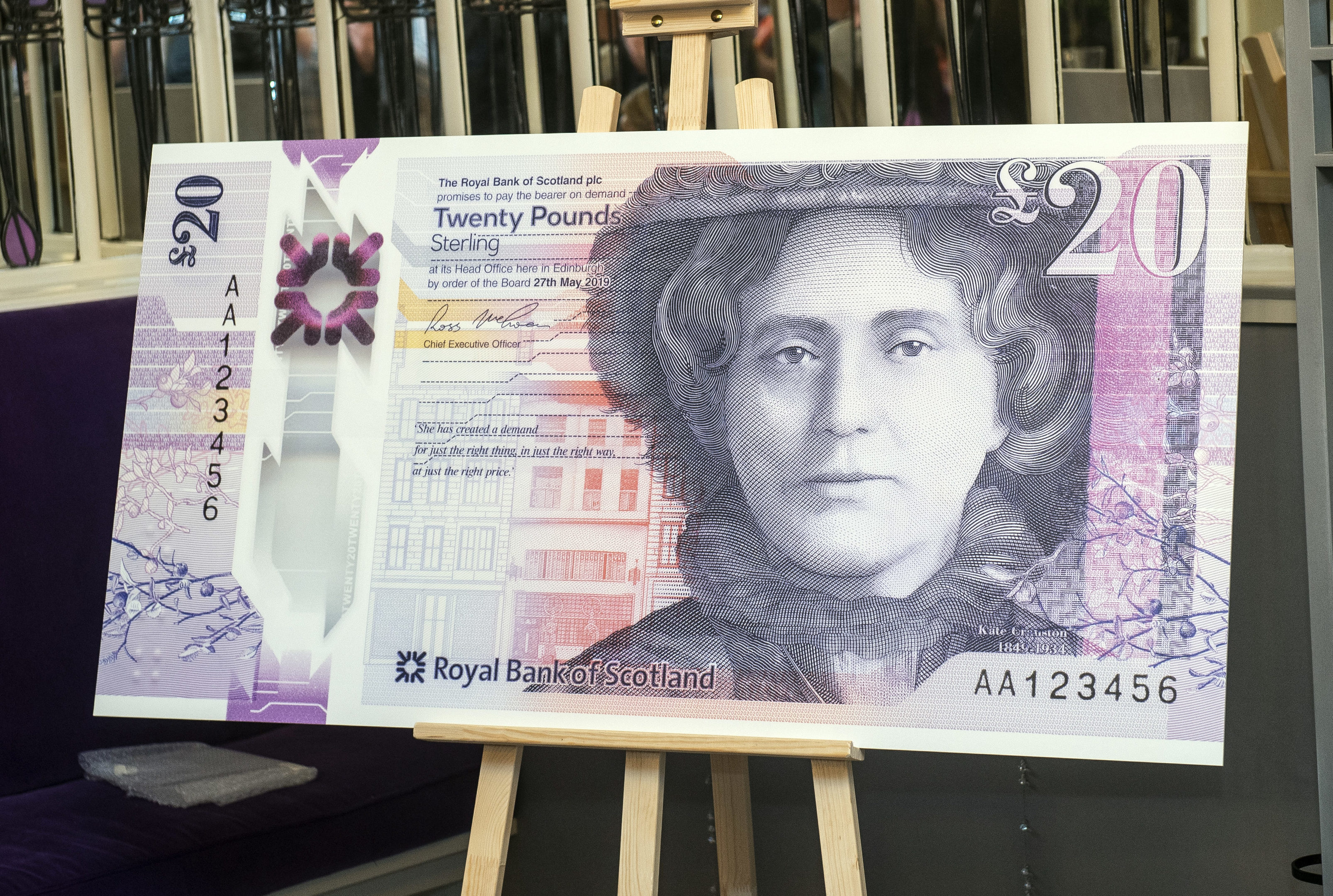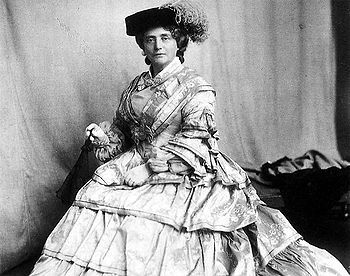
ROYAL Bank of Scotland has unveiled the design of its brand new polymer £20 note.
Featuring Scottish entrepreneur Kate Cranston, who was behind the iconic tearooms of Glasgow, it is the first Scottish £20 note to feature a woman other than the Queen on the front.
The plastic note was designed in partnership with a number of Scottish arts organisations and designers, including Graven Images, Nile, Stucco, Timrous Beasties, O’Street and the Glasgow School of Art.
Speaking at the launch, Royal Bank of Scotland’s Scottish board chair, Malcolm Buchanan, said: “At Royal Bank of Scotland, we feel that a banknote’s value is more than just the figure printed across its front – it is our symbol which lives in people’s pockets and touches everyday lives.
“Kate Cranston’s legacy touches so many aspects of Scottish life that we, as a nation, are justifiably proud; entrepreneurialism, art, philanthropy and dedication.
“Choosing the design of the £20 note was an important decision for it is Royal Bank of Scotland’s biggest circulating note, with £736m currently in circulation.
“As such, it is fitting that such a figure as Kate Cranston will be celebrated on the face of our most popular note.”
Born in 1849, Cranston was a leading figure in the development of tearooms. The daughter of a baker, she established the Crown Luncheon Room on Glasgow’s Argyle Street in 1878.
Placing emphasis on design and decor, as well as quality food, she set up the Miss Cranston’s Tearooms venture and opened a number of outlets, including the famous Willow Tea Rooms on Sauchiehall Street.
The tearooms became an important hub for women to socialise in the city, and also showcased the design work of Charles Rennie Mackintosh.
After her death in 1934, two thirds of Cranston’s estate went to the poor of Glasgow.
Now, 84 years on, the RBS Scottish Board have chosen her to be the new face of the bank’s £20 notes.
Celia Sinclair, Chair of the Willow Tea Room Trust, said: “We are delighted that the image of Kate Cranston is on the Royal Bank of Scotland £20 note. She was a very interesting and intelligent woman, an excellent businesswoman who changed attitudes.
“The Salon de Luxe, the centrepiece of Mackintosh at the Willow, was a symbol of social change in Glasgow where women began to socialise outside the home.”
The note which honours Cranston is part of RBS’ Fabric of Nature series, which has already seen £5 and £10 denominations launched to replace paper predecessors.
The new £20 features illustrations of red squirrels on its reverse and the blaeberry fruit, as well as extracts from 16th century Scottish poet Mark Alexander Boyd’s work, Cupid and Venus.
Our banknotes have a rich history, the design of our new £20 note will be unveiled next week. The design will feature philanthropist and entrepreneur Kate Cranston and will enter circulation in 2020, joining the £5 and £10 polymer notes featured in the video below. pic.twitter.com/npDTtX9YGr
— Royal Bank (@RBS_Help) October 19, 2018
The new note will carry the same exclusive weave pattern developed by textile designers Alistair McDade and Elspeth Anderson for the £5 and £10 polymer notes.
The material contains a variety of new security features, which RBS said makes it difficult to counterfeit but easy to authenticate.
The note, the design of which is the result of RBS’ People’s Money programme, is set for issue in 2020.

Enjoy the convenience of having The Sunday Post delivered as a digital ePaper straight to your smartphone, tablet or computer.
Subscribe for only £5.49 a month and enjoy all the benefits of the printed paper as a digital replica.
Subscribe